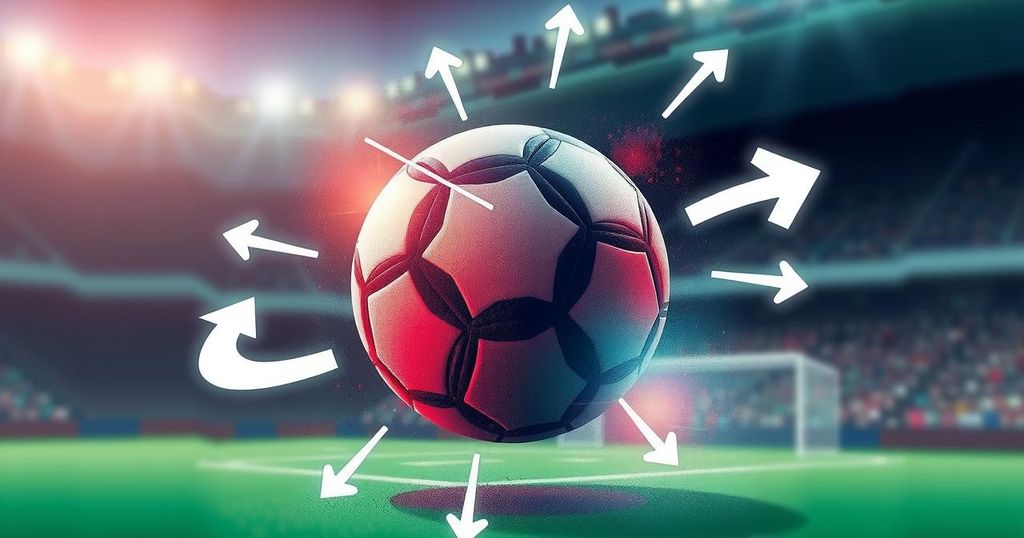Understanding the Mechanics of Football Transfers

Football transfers involve players moving across clubs for significant fees, impacted by transfer windows and contractual agreements. Neymar’s record transfer to PSG illustrates the high stakes in the market. Revenue from broadcasting, sponsorships, and merchandising fuels these transactions, despite only 14% of worldwide transfers involving fees. The market has transformed, reflecting rising costs and financial capabilities of clubs.
Every summer, football clubs engage in significant financial transactions to acquire top talent. This process known as a transfer involves a player moving from one club to another, typically incurring a transfer fee paid by the new club to the player’s current club. As seen in the record-breaking move of Neymar from Barcelona to Paris Saint-Germain for €222 million, these fees can reach astronomical figures. There is no cap on how much clubs can spend on player acquisitions, leading to a fiercely competitive market.
A football transfer occurs within established periods known as transfer windows set by FIFA, allowing clubs to buy and sell players. Typically, there are two windows: a longer one in summer after the season ends and a shorter mid-season one. The exact dates may vary based on national football associations; for example, many European leagues close their summer window on August 31.
The mechanics of a transfer also involve negotiations between the player, the agent, and their respective clubs to reach an agreement on the terms of a new contract. This includes the player’s salary and additional bonuses, along with necessary medical examinations. If any physical injuries are detected, they can impact the negotiated transfer fee.
It is critical to understand who receives the fees involved in transfers. For instance, in Neymar’s case, Paris Saint-Germain paid the €222 million buyout clause to FC Barcelona, not to Neymar directly. Furthermore, intermediaries involved in the transfer are compensated, as Neymar’s father and agent reportedly received €38 million for facilitating the move. PSG then pays Neymar an annual salary of around €45 million, hoping to capitalize on his image rights.
The football landscape today is financially robust, fueled by huge revenues generated from sponsorships, merchandise, and broadcasting rights. According to Deloitte, the top twenty football clubs amassed €7.4 billion in revenue in 2015/16. The astronomical spending in transfers can be attributed to the lucrative broadcasting deals, particularly seen in the Premier League, enhancing clubs’ financial capabilities to acquire talent.
Historically, the nature of transfer fees and the market for players have evolved significantly, particularly post-1995 when the Bosman ruling eliminated restrictions on EU players. Consequently, the market has opened up, leading to escalating transfer fees and a greater influx of foreign talent, with nearly 70% of Premier League players being international by 2016. This financial evolution has led to substantial increases in player valuations and club wealth.
Despite the mixed reactions regarding the high transfer fees dominating the market, evidence suggests that exorbitant fees are not commonplace across all player transfers. For instance, only 14% of global transfers resulted in fees being paid in the past year; the majority were free transfers where contracts had expired. Furthermore, there are discussions on whether players like Lionel Messi, with a €300 million buyout clause, could potentially break Neymar’s record in the future.
In summary, football transfers are complex transactions involving significant financial outlays, contractual negotiations, and medical evaluations. The process is regulated through specific transfer windows and impacted by broader financial trends within the sport. Despite the prevalent high transfer fees, not all player movements entail payment, as free transfers also constitute a sizeable portion of the market. The evolution of the transfer market reflects a broader trend of increasing wealth and competitive dynamics among clubs, which shapes the future of player acquisitions.
Original Source: www.bbc.com








